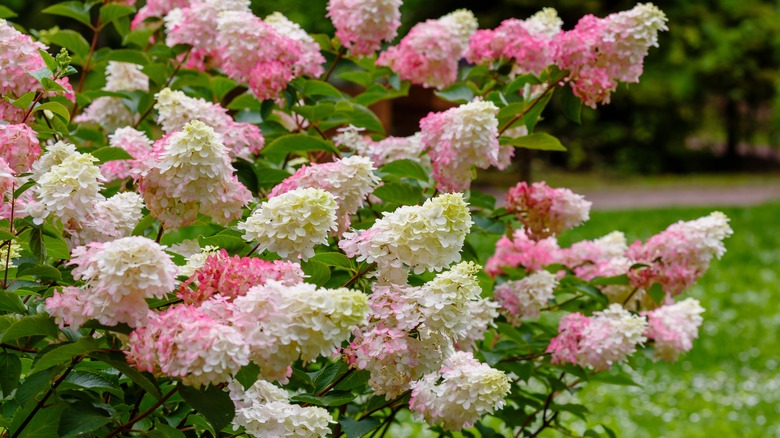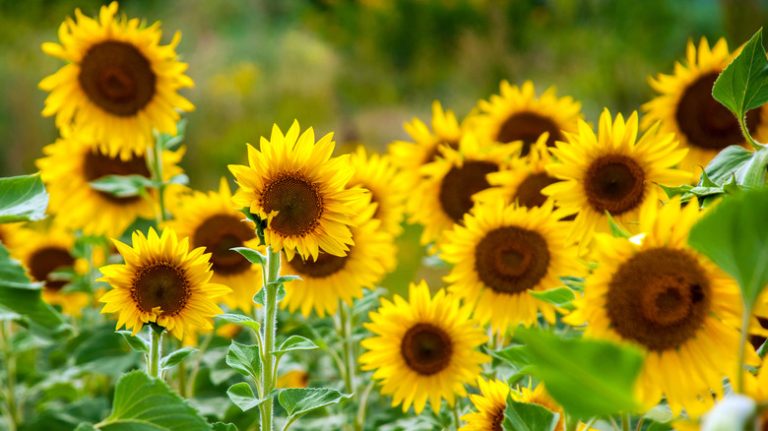When you’re new to gardening, many plant options can feel overwhelming. That’s why beginning with a forgiving and resilient type can be a game-changer, and that’s precisely where panicle hydrangeas (Hydrangea paniculata) come into the picture. Walking into a garden center, you’ll often find various panicle hydrangeas prominently displayed. For the uninitiated, these might seem like just another flowering plant, but they’re actually a novice gardener’s best friend.
They originated in Asia and have adapted well to various climates, growing best in USDA hardiness zones 3 through 8. Over the years, breeders have introduced different cultivars to meet varying aesthetic and functional needs. For instance, Limelight has light lime-green flowers and grows up to 8 feet tall. Another popular choice is Vanilla Strawberry, characterized by its white flowers that turn strawberry-pink, reaching a height of 6 feet. With such variety, finding a panicle hydrangea that fits perfectly into your gardening plans is easy.
While all hydrangeas are considered fairly easy to grow and take care of, the hardiness of panicle hydrangeas is a crucial factor in their growing popularity. These are resilient to common gardening challenges like fluctuating temperatures and varying soil conditions. They offer the kind of reliability that can make your first gardening experience positive, reinforcing your decision to take up this enriching hobby. By beginning with easy-to-grow plants like these, you’ll find it far more enjoyable to cultivate your green thumb and be more inclined to try your hand at more demanding plants as you gain experience.
Sun requirements: give them their daily dose

Navigating the intricacies of sunlight needs for different plants is one of the foundational skills you’ll need to master as a gardener. It’s a fact that plants use sunlight to perform photosynthesis, turning light into the energy they need to grow. But not every plant is the same in its sunlight needs. Some require indirect light, while others thrive in shade.
However, panicle hydrangeas offer a delightful respite if you’re just getting started in gardening and don’t want the added stress of matching each plant to its exact sunlight preference. Unlike some of their more temperamental relatives, they’re relatively unfazed by variations in sunlight. So even if you misjudge the amount of light a specific garden spot receives, it won’t spell doom for your hydrangea. As you become more familiar with your garden’s unique light patterns, you can feel at ease knowing that your panicle hydrangea won’t suffer as you make adjustments.
The flexibility of these hydrangeas is not to be underrated, especially in climates that can present challenges for less-hardy plants. If you’re gardening in cooler areas designated by USDA zones 3 through 6, your panicle hydrangea will perform well with just four hours of direct sunlight. But if you can find a spot that gets six or more hours of light, you’ll be rewarded with even more vigorous growth and flowering. If you live in a hotter climate, provide afternoon shade after six hours of direct sunlight if possible.
Soil and water needs: flexibility is their middle name

Understanding soil conditions can be a learning curve for beginner gardeners, but fortunately, panicle hydrangeas make it easy. These plants aren’t particularly picky about their soil environment. Be it acidic or alkaline soil, they adapt well without demanding you to turn into a soil scientist. While they prefer a soil pH level between 5.5 and 6, they can survive in many conditions. So, you won’t find yourself running countless soil tests or making frequent trips to the gardening store for specialized treatments. When concerning fertilizer, a straightforward application of granular fertilizer once a year, preferably in the spring, usually does the trick.
In terms of water requirements, these hydrangeas strike a nice balance. They do enjoy soil that can hold moisture, but they also like it to be well-draining. This makes them versatile, allowing them to adapt to different moisture conditions, which is especially beneficial after heavy rainfalls. Poor drainage can lead to waterlogged conditions that put the plant at risk for root rot. So, when you choose a spot for them, ensure it doesn’t collect water, essentially turning into a puddle post-rainstorm. That being said, since they are sun-friendly plants, they’ll likely require more frequent watering than plants that prefer the shade. However, this isn’t something to stress about. Pay attention to the soil’s moisture level and you’ll soon understand its watering rhythm.




